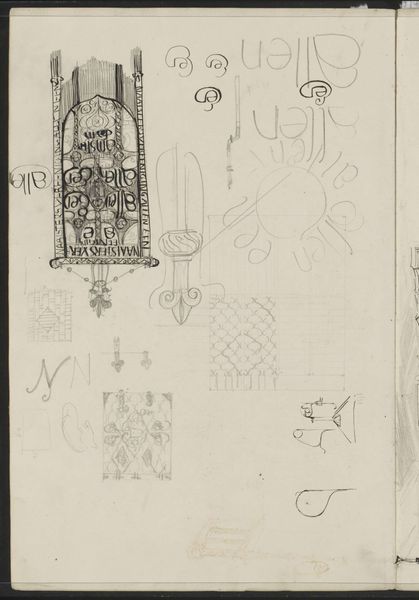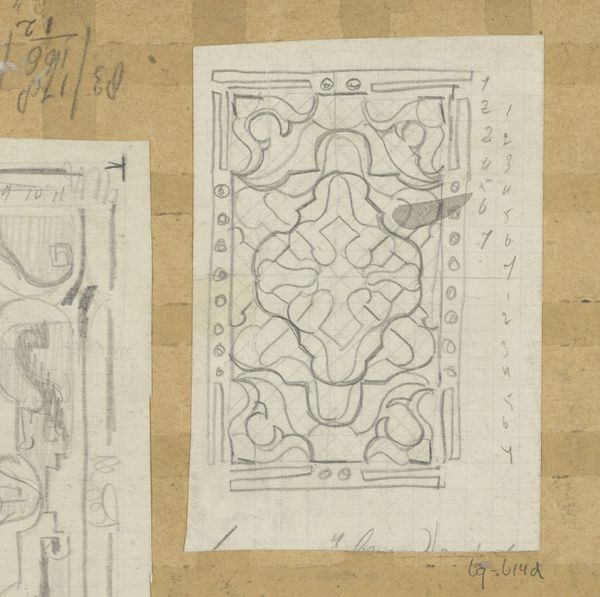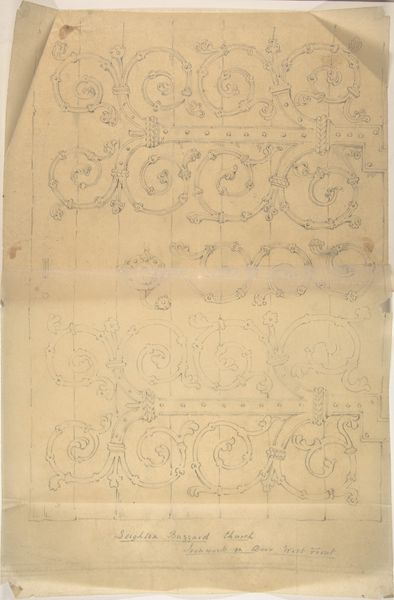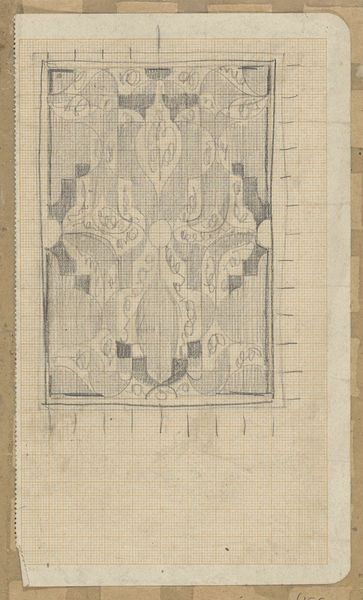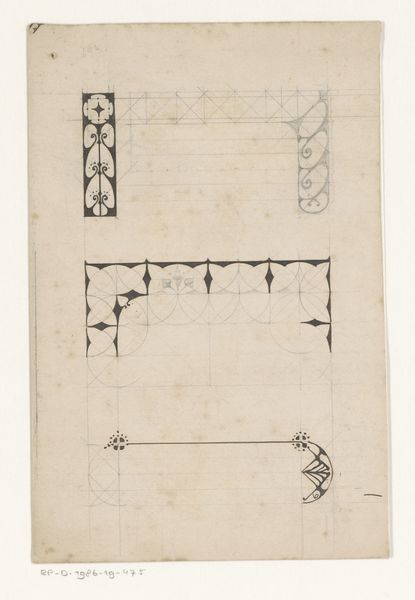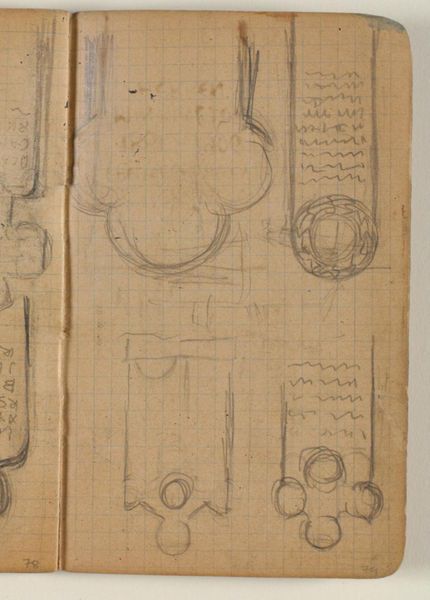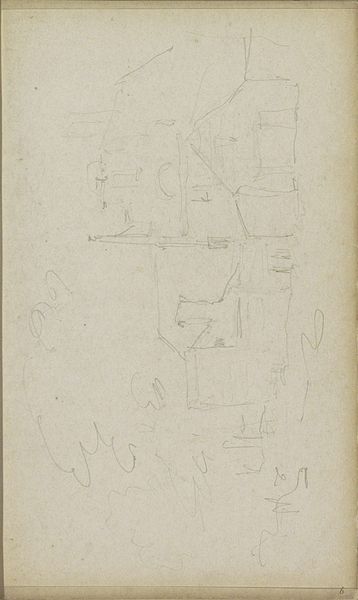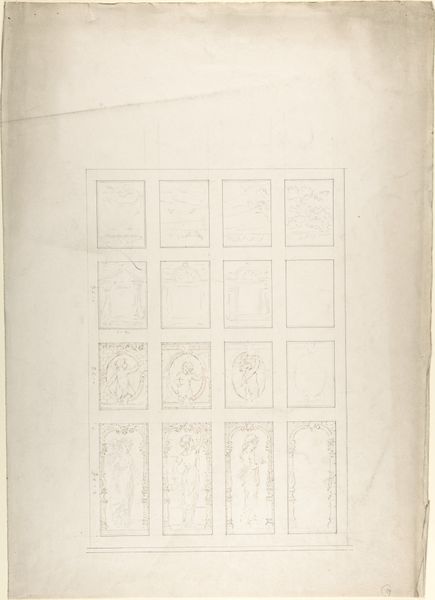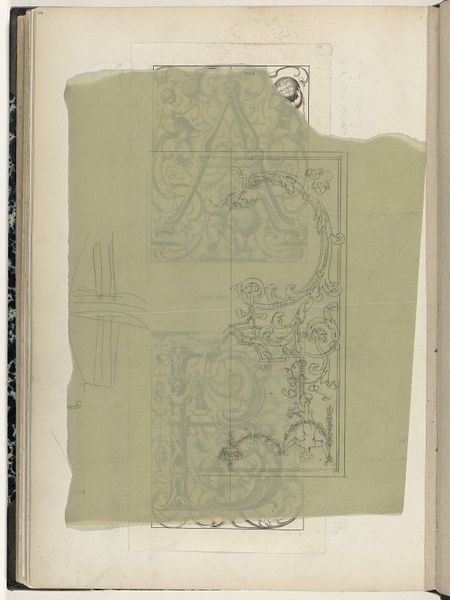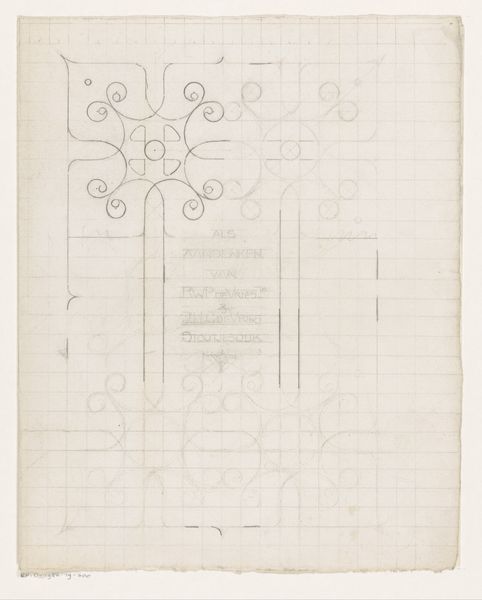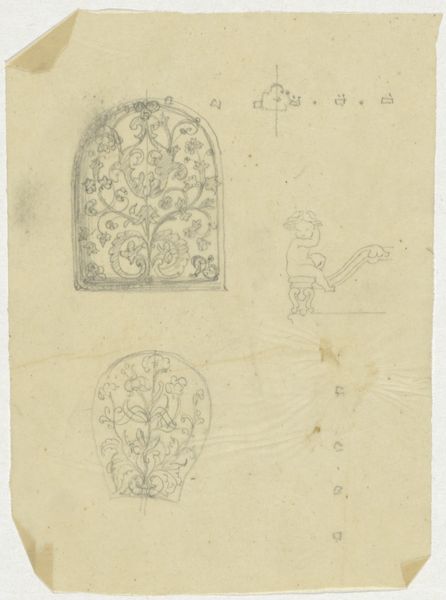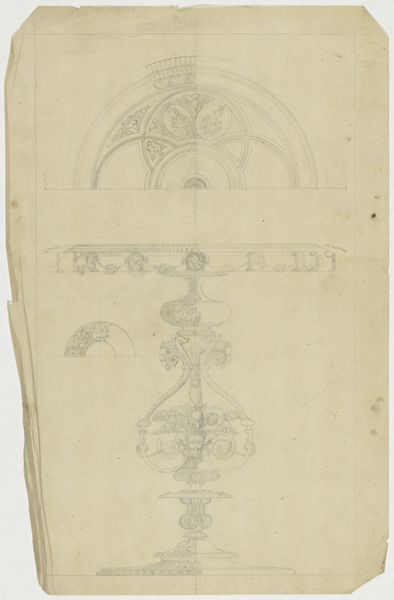
#
aged paper
#
toned paper
#
ink paper printed
#
hand drawn type
#
personal sketchbook
#
fading type
#
ink colored
#
pen work
#
sketchbook drawing
#
sketchbook art
Dimensions: height 205 mm, width 330 mm
Copyright: Rijks Museum: Open Domain
Editor: This is a “Decorative Design” from around 1874 to 1945 by Carel Adolph Lion Cachet, created with ink on paper. It’s housed here at the Rijksmuseum. I find it incredibly detailed, almost like a blueprint with these ornate, organic shapes constrained by a strict grid. What compositional elements strike you? Curator: Note how the grid provides structure but doesn’t stifle the artist's more fluid, curvilinear flourishes. Observe the tension between order and spontaneity here. What principles of semiotics can be applied when analysing these stylistic oppositions? Editor: The grid acts almost like a scaffolding, letting the design stand out. I notice similar ornate designs on period furniture from that time. The question, how would a formalist engage with the question of intentionality of art forms like decorative design that are intended for function over meaning? Curator: Excellent point. As formalists, we can set the problem of intention aside and direct attention toward line quality, the interplay of positive and negative space, the weight given to certain compositional features relative to the design’s functionality. Does this resonate? Editor: Yes, absolutely! So, it’s about recognizing the piece's own formal vocabulary as opposed to what it's meant to do or represent. I guess I was trying to ask where the beauty lies: within the design elements that transcend their utilitarian intentions? Curator: Precisely. One can look for what the structure and design contributes and what it doesn’t. What features are accentuated through their position? Can we deduce a philosophy of aesthetics from the arrangement of shapes, lines, and forms in relation to its surface or format? Editor: I see that the visual design and functionality of the original objects is connected by formal principles of art! The emphasis is less on the artwork as concept and more as an experience rooted in its own elements, like the relationship of shape, shade, and texture. Curator: Exactly. And a closer look might reveal other elements, or reinforce the features we've noted! Thank you.
Comments
No comments
Be the first to comment and join the conversation on the ultimate creative platform.
